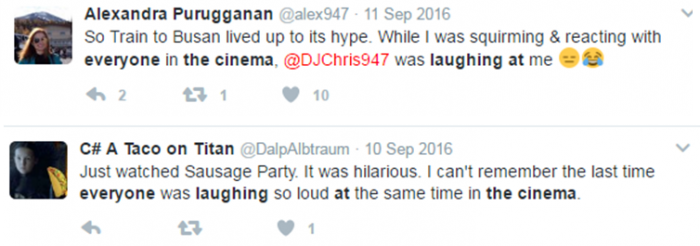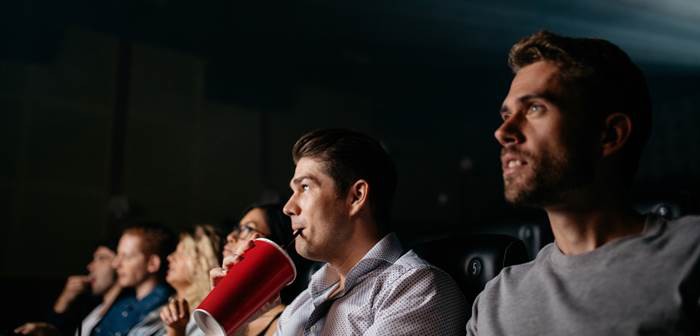As part of the Knowledge Express programme, our Graduate training scheme here at OMD UK, I’ve been given an insight into the multiple ways people are accessing content and interacting with brands across platforms.
Learning about the world of media and communications first hand from people in the industry has been eye-opening and as a result, I find myself looking at everyday media in a different light. From thinking about where my eyes are drawn to on an Out-of-Home advert, or what makes me look up at a TV ad while I’m head down on my phone, to how much my Instagram feed really influences my purchase decisions, I’m not only noticing how I engage with different channels but how much power they really have.
Most recently I noticed just how passive I am when watching TV compared to how involved I am when at the cinema. Beyond the fact that I’ve paid a significant amount of money to be there, and the audio-visuals are attention grabbing in themselves, what is it about cinema experiences that make us sit up and pay attention? So much so that it increases ad recall 8x more than TV and increases the likelihood of recommending products by 10% (Source: CAA/RedBlue ‘Impacts’ Research 2007, and IPA Touchpoints).
One of the reasons I think we’re that little bit more receptive to what’s on screen has to do with the shared element of cinema. When we’ve paid to see a film, the indulging experience of sitting back and escaping the world outside is a collective one. We’re shutting it out together. I feel an odd sense of solidarity with the people who are similarly grimacing at the sight of Leonardo tucking into a raw bison liver.

Company is part of the experience, and if being in company tends to lift our mood, no wonder we’re more amenable to content.
It goes without saying that cinema offers a retreat, a place to lose ourselves and forget about impending responsibilities. Yet while it can offer a break from the speed of modern life and everyday routine, visiting a cinema is a ritual in its own right. From choosing between sweet and salted (or a mixture of both if you’re indecisive like me) to choosing where to sit, the ritual of cinema is a familiar one. Enjoyment starts to build long before the film begins as often we talk about it with friends, read reviews or watch the trailer days before viewing. Adverts screened before the film are well and truly part of this routine. I know I’m not the only one who likes these pre-film ads (and the brands behind them) as research shows that brand likeability goes from 11% for a TV ad to 17% for a cinema one, increasing to 19% when the ad is paired with a TV creative (Source: Nielsen Brand Effect Jan 2011 through Dec 2015). I expect them and often look forward to them. They build anticipation for the main event, without distracting from it – maybe another reason why we see an increase in brand favourability.
So while we know that the impressive sound system and high definition visuals give cinema ads an immersive, sensory quality, it is also about the collective experience, our lifted mood, escapism, and the role ads play as part of the ritual of cinema. Brands are not just relying on these qualities, but increasingly going even further- some of the most effective and innovative campaigns from 2016 include Airbnb’s split screened ‘Don’t Go There. Live There’ Campaign and Xbox’s Forza Horizon 3 using 4DX screens that enable a visual and physical experience of the game.
Ultimately the relaxing and inclusive experience surrounding cinema adverts makes it a great medium for brands wanting to build an emotional connection with audiences. This is even more important for brands wanting to target ABC1 males aged 15-35 as they are the most likely to be heavy cinema goers (Source: TGI).



